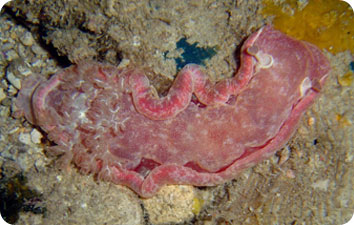The nudibranch looks like it ought to be an easy meal for just about any ocean predator. It’s basically a small, colorful, slow-moving blob of flesh with no shell or great big teeth to protect it.
 Most nudibranchs look like colorful, slow-moving blobs of flesh. Credit: National Oceanic and Atmospheric Administration
Most nudibranchs look like colorful, slow-moving blobs of flesh. Credit: National Oceanic and Atmospheric AdministrationYet when most predators see a nudibranch, they keep on moving. That’s because the nudibranch’s defense is based on an old principle: waste not, want not. It basically reuses the defense mechanisms of the organisms it eats.
Marine biologists have cataloged about 3,000 species of nudibranch, which are also known as “sea slugs.” They inhabit all the world’s oceans. Most are no more than a few inches long, although a few can grow as big as a dinner plate.
Most species are brightly colored. For some, the color serves as camouflage -- it allows them to blend in with the plants on the ocean floor. But for others, it’s a warning. It tells potential predators that there’s no meal here -- only a nasty sting or stomach ache.
A nudibranch doesn’t produce these effects on its own. Instead, it recycles them from its prey.
A nudibranch’s diet includes anemones, sponges, stinging corals, the Portuguese man-o’-war, and other critters with their own chemical defenses. When the nudibranch eats the stinging parts of these creatures, it doesn’t digest them. Instead, it routes them back to its own skin. That forms a defensive barrier made from the cells of its own prey.
So while the nudibranch may look like an easy meal, it’s really a reminder of another old principle: there’s no such thing as a free lunch.

